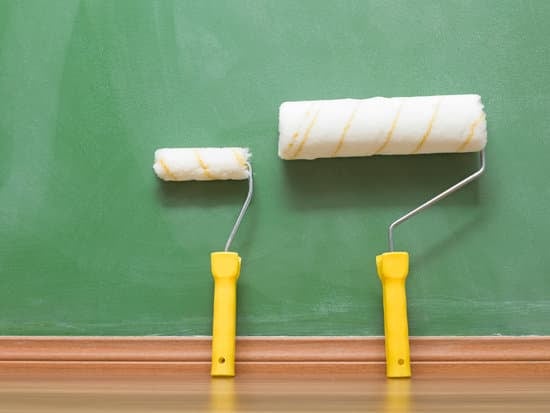What’s the best way to borrow money for home improvements? When it comes to funding your home renovation project, there are several financing options to consider.
From traditional lending options to government-backed financing and even contractor financing, it’s important to understand the pros and cons of each before making a decision. In this article, we’ll explore the various avenues available for funding your home improvement project and provide tips for finding the best lender for your needs.
When it comes to understanding your financing options for home improvements, it’s essential to consider traditional lending options such as personal loans, home equity loans, and HELOCs. Each option comes with its own set of advantages and disadvantages that should be carefully weighed before making a decision. We’ll delve into the details of these lending options and provide guidance on which one may be the right fit for your specific circumstances.
In addition to traditional lending options, there are also government-backed financing programs designed specifically for home improvements. Understanding the eligibility requirements and benefits of these programs can help homeowners make an informed decision about their financing needs.
Furthermore, we’ll discuss the risks and benefits of using credit cards and contractor financing for home renovations, as well as provide tips on finding the best lender for your project. Whether you’re a first-time renovator or an experienced homeowner looking to refresh your living space, making the right choice in home improvement financing is crucial.
Exploring Traditional Lending Options
When it comes to borrowing money for home improvements, there are several traditional lending options to consider. One of the most common options is a home improvement loan, which can be obtained from banks, credit unions, and online lenders. These loans typically have fixed interest rates and terms that can range from a few years to several decades, depending on the amount borrowed.
Another traditional lending option to explore is a cash-out refinance, where homeowners can refinance their existing mortgage and take out a larger loan, using the difference to fund their home improvement projects. This option allows homeowners to take advantage of lower interest rates and potentially borrow more money than they could with other types of loans.
A third traditional lending option for home improvements is a personal line of credit from a bank or credit union. This type of revolving credit allows homeowners to borrow funds as needed up to a certain limit and only pay interest on the amount borrowed. While this option provides flexibility in borrowing, it’s important for homeowners to carefully consider their repayment capabilities and avoid overextending themselves financially.
| Traditional Lending Option | Type of Financing |
|---|---|
| Home Improvement Loan | Fixed Interest Rate; Various Terms |
| Cash-out Refinance | Larger Loan Amount; Lower Interest Rates Possible |
| Personal Line of Credit | Revolving Credit; Flexibility in Borrowing |
The Advantages and Disadvantages of Personal Loans
When it comes to financing home improvement projects, personal loans are a popular option for many homeowners. Before making a decision, it’s important to weigh the advantages and disadvantages of personal loans to determine if they are the right choice for your specific situation.
Advantages of Personal Loans
One of the main advantages of personal loans is their flexibility. Unlike some other financing options, personal loans can be used for a wide range of purposes, including home improvements. Additionally, personal loans typically have fixed interest rates and monthly payments, making it easier to budget for the expense. Another advantage is that personal loans often have a quicker approval process compared to other types of financing, allowing homeowners to access funds promptly for their home improvement projects.
Disadvantages of Personal Loans
On the flip side, one major disadvantage of personal loans is that they may come with higher interest rates compared to other forms of financing, such as home equity loans or government-backed options. Additionally, the amount you can borrow with a personal loan may be limited by your creditworthiness and income. It’s also important to consider that taking out a personal loan adds to your overall debt load and could impact your credit score if not managed properly.
Overall, when considering what’s the best way to borrow money for home improvements, it’s crucial to carefully evaluate both the advantages and disadvantages of personal loans before making a decision.
Home Equity Loans and HELOCs
When it comes to financing home improvements, tapping into the equity of your home can be a great option. Home equity loans and home equity lines of credit (HELOCs) are secured loans that use your home as collateral. Here’s what you need to know about these options:
- Home Equity Loans: This type of loan allows you to borrow a lump sum of money based on the equity in your home. The interest rates are typically fixed, and the repayment terms are structured, making it easier to budget for the monthly payments. However, keep in mind that if you default on the loan, you could risk losing your home.
- HELOCs: Unlike a home equity loan, a HELOC is a revolving line of credit that allows you to borrow money as needed, up to a certain limit, similar to a credit card. The interest rates are variable, and the repayment terms are flexible. One advantage of a HELOC is that you only pay interest on the amount you actually use. However, this flexibility can also lead to higher debt if not managed carefully.
Before deciding between a home equity loan or a HELOC, consider factors such as your financial situation, how much money you need, and how disciplined you can be with managing debt. It’s essential to evaluate both options thoroughly before making a decision on what’s the best way to borrow money for home improvements.
Government-Backed Financing Options for Home Improvements
When it comes to financing home improvements, there are a variety of government-backed options available to homeowners. These programs are designed to provide affordable and accessible financing for individuals looking to make improvements to their homes. Here are some of the most common government-backed financing options for home improvements:
1. FHA Title I Property Improvement Loan: This program is designed specifically for home improvement projects and allows borrowers to finance up to $25,000 for single-family homes and $12,000 per unit in a multi-family structure.
2. Energy Efficient Mortgages (EEMs): EEMs are designed to help homeowners finance energy-efficient improvements for their homes, such as installing solar panels or upgrading insulation. These loans can be used in conjunction with FHA or VA loans.
3. USDA Rural Development Loans: The USDA offers loans and grants for low-income homeowners in rural areas who need to make essential repairs or upgrades to their homes. This program is known as the Single Family Housing Repair Loans & Grants program.
These government-backed financing options offer favorable terms and lower interest rates compared to traditional lending options, making them an attractive choice for many homeowners looking to finance their home improvement projects.
It’s important to carefully consider all of your financing options and weigh the benefits and drawbacks of each before making a decision on how to fund your home improvements. Working with a trusted lender who has experience in providing government-backed financing can help you navigate the process and find the best option for your specific needs.
The Risks and Benefits of Using Credit Cards for Home Renovations
Using credit cards for home renovations can be a convenient and quick way to finance your projects, but it comes with its own set of risks and benefits. Here’s what you need to know before swiping that plastic for your home improvement needs.
The Benefits of Using Credit Cards
One of the main advantages of using credit cards for home renovations is the convenience and accessibility they offer. With a credit card, you can easily make purchases online or in-store for materials, appliances, and other renovation expenses. Many credit cards also come with rewards programs that can earn you cash back or points for future purchases, providing additional benefits for your home improvement spending.
Another benefit is the potential for 0% introductory APR offers on new credit cards. This means you could pay off your home renovation expenses over time without accruing interest, saving you money in the long run.
The Risks of Using Credit Cards
Despite the benefits, there are also inherent risks when using credit cards for large home renovation expenses. High-interest rates on unpaid balances can quickly accumulate if you’re unable to pay off the full amount each month, leading to significant debt in the long term. Additionally, maxing out your credit card limit could negatively impact your credit score, affecting your ability to secure future financing for larger endeavors such as a mortgage or car loan.
Furthermore, using a high percentage of your available credit can increase your credit utilization ratio, which can also harm your credit score. Before using a credit card for home renovations, it’s essential to consider these risks and weigh them against the benefits to determine if it’s the best option for your financial situation.
Understanding the Pros and Cons of Contractor Financing
When it comes to home improvement projects, many homeowners may consider contractor financing as an option for funding their renovations. Contractor financing involves the contractor or remodeling company offering to finance the project for the homeowner, typically through a partnership with a third-party lender. While this can seem like a convenient and straightforward option, it’s important to understand the pros and cons before making a decision.
One of the main advantages of contractor financing is convenience. It provides homeowners with an easy and streamlined process for financing their home improvements without having to search for a separate lender on their own. Additionally, some contractors may offer promotional deals or special financing options that are not available through traditional lending institutions. This can be especially appealing for homeowners who are looking to take advantage of low or zero-interest financing offers.
On the other hand, there are also potential drawbacks to consider when it comes to contractor financing. One of the primary concerns is the interest rates and fees associated with these types of loans. In some cases, contractor financing may come with higher interest rates compared to other lending options, ultimately costing homeowners more in the long run. Additionally, there may be limitations on how much you can borrow through contractor financing, which could hinder larger-scale renovation projects.
Another important consideration is that when you choose contractor financing, you are essentially tying your loan to the work being done on your home. This means that if there are any issues with the quality of work or if something goes wrong during the project, it could impact your financial situation and make it more difficult to resolve any disputes with the contractor.
| Pros | Cons |
|---|---|
| Convenient and streamlined process | Potentially higher interest rates and fees |
| Access to promotional deals and special financing options | Limits on borrowing amounts |
| No need to find a separate lender | Your loan is tied to the work being done on your home |
Tips for Finding the Best Lender for Your Home Improvement Project
When it comes to finding the best lender for your home improvement project, there are several factors you should consider. First and foremost, it’s essential to shop around and compare the terms and interest rates offered by different lenders. This will help you find the most competitive loan options available to you.
Additionally, take the time to research the reputation and customer service of potential lenders. Reading reviews and checking their accreditation with organizations such as the Better Business Bureau can give you insight into their reliability and trustworthiness.
Another important tip for finding the best lender for your home improvement project is to consider your own financial situation and borrowing needs. Some lenders may have specific criteria or requirements that you need to meet in order to qualify for a loan. Understanding your credit score, income, and existing debt will help narrow down your options and guide you towards lenders who are more likely to approve your application.
It’s also crucial to communicate openly with potential lenders about your home improvement plans and budget. Some lenders may offer specialized loan products designed specifically for renovations, so discussing the details of your project can help them tailor a loan package that meets your needs.
Finally, don’t forget to factor in any additional fees or charges associated with each lender’s loan products. While a lower interest rate may seem attractive, hidden fees could ultimately make another lender a better choice for your home improvement financing needs.
Final Thoughts
Considering the various financing options available for home improvements, it’s essential to carefully evaluate each option’s advantages and disadvantages. Ultimately, the best way to borrow money for home improvements will depend on your unique financial situation, the scope of the project, and your long-term goals.
Whether you opt for a traditional loan, tap into your home’s equity, explore government-backed programs, or consider contractor financing, it’s crucial to weigh the risks and benefits before making a decision.
Before committing to a specific financing option, take the time to thoroughly research and compare lenders. Look for competitive interest rates, favorable terms, and reputable customer service. Additionally, seek guidance from financial advisors or other professionals who can help you navigate the complex world of home improvement financing. By taking these steps and fully understanding what’s involved in each option, you can make an informed decision that aligns with your financial goals.
While borrowing money for home improvements can be a daunting process, understanding your financing options and finding the right lender are crucial in achieving successful results. By carefully weighing the pros and cons of each avenue and seeking expert advice when necessary, homeowners can feel confident about their choice of financing.
Whether it’s through traditional lending institutions or alternative sources like contractor financing or credit cards, making an informed decision is key to ensuring a successful outcome for any home improvement project.
Frequently Asked Questions
What Is the Minimum Credit Score for a Home Improvement Loan?
The minimum credit score for a home improvement loan can vary depending on the lender. However, a credit score of 620 is typically considered the minimum requirement to qualify for most home improvement loans.
Are Renovation Loans a Good Idea?
Renovation loans can be a good idea for homeowners who want to make improvements to their property but may not have the cash on hand. These loans offer a way to finance renovations without using high-interest credit cards or depleting savings.
What Is the Cheapest Way to Get Equity Out of Your House?
The cheapest way to get equity out of your house is through a home equity line of credit (HELOC) or a cash-out refinance. Both options allow you to access the equity in your home at relatively low interest rates compared to other financing methods.

I’m thrilled to have you here as a part of the Remodeling Top community. This is where my journey as an architect and remodeling enthusiast intersects with your passion for transforming houses into dream homes.





